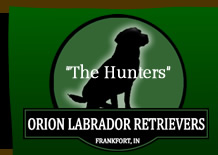A dog breeder must know the goal he is pursuing. Without a clear understanding of his breed and its history he may fall victim to the whims of the day and stray from the correct type and temperament that distinguishes his breed. Therefore, I believe that it is vital to understand the origins of the Labrador retriever and its development in the early years of its history in order to have a proper perspective of the breed. With the knowledge and understanding of the “original Lab” a breeder is better able to focus on preserving the traits that have made the Labrador Retriever one of the most versatile and talented breeds in existence. .
The ancestors of the Labrador retriever were used by English fishermen in Newfoundland beginning in the early 1500’s. The fishermen used the dogs to assist them with their inshore cod fishing by performing various tasks, such as fetching lines from one vessel to the next and retrieving fish that escaped the crude hooks of the day. They were also used during the winter months in the pursuit of game to help feed their masters. These were not pampered pets; they were hard working dogs that must provide useful services to their owner in order to earn their keep. Living conditions were harsh; food and shelter were limited. Dogs that were not up to the task were a liability and would likely not be around long enough to reproduce. This harsh reality provided the mechanism for the selection of superior animals on Newfoundland for a period of almost 300 years before some noblemen in England took an interest in these St. Johns water dogs and began importing them. During the nineteenth century a small handful of these men helped to establish the breed in Great Britain which became known as the Labrador retriever.

There were no records kept by those fishermen to tell us of their dogs and there are no pictures to provide an image of them, but I think we can deduce what type of dog they would have needed. If you were working out of a small dory in rough ocean waters, you would not have wanted a large dog to haul over the gunwales, but he must have been strong enough to do the work. He would have needed a waterproof top coat to help keep him dry and a dense undercoat to insulate him from the cold waters of the North Atlantic. It would have been dangerous if he had been wild or rowdy, so he must have been calm and biddable, yet he must have been bold enough to be willing to brave the cold rough surf to do his job. He would have needed to be very intelligent, and eager to please his master, who was too busy working to be constantly training his dog. He must also have been a great companion to help pass the long winter months between fishing seasons. Therefore, I believe we can conclude that the original Lab would have been a moderately sized, strongly built, calm, intelligent, eager-to-please, companionable dog with a dense waterproof coat. Throw in a good measure of confidence and bravery and that must have been the essence of the original Lab.
In England, his task became that of a non-slip retriever for the hunter. He was also used in the uplands questing for game in the manner of a spaniel. These tasks required that he was calm, quiet, and attentive to his handler, able to mark and remember fallen game birds, and able to take direction from his handler to falls he did not see. He would need a good nose to find game fallen in thick cover, to trail wounded game, and find and flush game in gun range, and he must be a natural retriever with a soft mouth who was eager to return to his handler with his find. These traits further define the proper Labrador retriever.
In the past fifty or sixty years the form and temperament of many strains of the Labrador retriever have changed due to pressures from competitive endeavors in the field and on the bench. Fortunately, there are some old photographs of Labrador retrievers dating from as early as the 1850’s into the first few decades of the 1900’s that show what Labs looked like prior to the split between field and show types. Some of these pictures are of Labs that were dual champions, who were successful both in the show ring and in field trials. Studying these photos has helped me to define the look of the original Lab before specialization in competitive venues altered the appearance of many of our Labrador retrievers.
My goal is for Orion Labrador retrievers to exemplify the physical conformation and temperament described in the breed standard without displaying the often exaggerated physical or behavioral traits that have become much too common in present day show-bred or field trial bloodlines.



